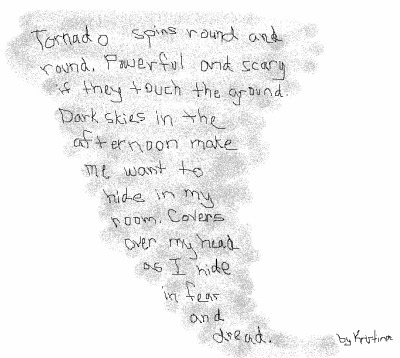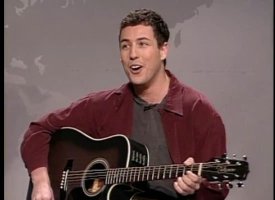Source (google.com.pk)
Funny Christmas Rhymes Biography
Yes, there really was a Dr. Seuss. He was not an official doctor, but his prescription for fun has delighted readers for more than 60 years. Theodor Seuss Geisel (“Ted”) was born on March 2, 1904, in Springfield, Massachusetts. His father, Theodor Robert, and grandfather were brewmasters and enjoyed great financial success for many years. Coupling the continual threats of Prohibition and World War I, the German-immigrant Geisels were targets for many slurs, particularly with regard to their heritage and livelihoods. Despite some financial hardship due to Prohibition, Ted enjoyed a fairly happy childhood. His parents were strict, but very loving. His mother, Henrietta Seuss Geisel, had worked in her father’s bakery before marrying Ted’s father, often memorizing the names of the pies that were on special each day and ‘chanting’ them to her customers. If Ted had difficulty getting to sleep, she would often recall her ‘pie-selling chants’. As an adult, Ted credited his mother “for the rhythms in which I write and the urgency with which I do it” (Morgan, p. 7).
If you’ve never seen a photograph of Dr. Seuss, you probably picture him as a young child or a grandfatherly gentleman. You may not have considered his robust years as a college student.
Ted attended Dartmouth College and by all accounts was a typical, mischievous college student. According to Judith and Neil Morgan, co-authors of Dr. Seuss and Mr. Geisel and personal friends of his, “Ted grew to respect the academic discipline he discovered at Dartmouth—not enough to pursue it, but to appreciate those who did” (Morgan, p. 28). He worked hard to become the editor-in-chief of Jack-O-Lantern, Dartmouth’s humor magazine.
His reign as editor came to an abrupt end when Ted and his friends were caught throwing a party that did not coincide with school policy. Geisel continued to contribute to Jack-O, merely signing his work as “Seuss.” This is the first record of his using the pseudonym Seuss.
Graduation from Dartmouth was approaching, and Ted’s father asked the question all college students dread: what was Ted going to do after college? Ted claimed to have been awarded a fellowship to Oxford University and the elder Geisel reported the news to the Springfield paper, where it was published the following day. Ted confessed the truth—Oxford had denied his fellowship application—and Mr. Geisel, who had a great deal of family pride, managed to scrape together funds to send him anyway. Ted left for Oxford intending to become a professor (he couldn’t think of anything else to do with an Oxford education). It would be the first of many turning points in his career.
Sitting in his Anglo-Saxon for Beginners class, his doodling caught the eye of a fellow American student named Helen Palmer. Helen suggested that he should become an artist instead of a professor. He took her advice and eventually, he took her hand in marriage as well.
Marriage and career, however, did not come quickly. Ted needed to earn a living before he could think of a life with Helen. He decided that he could make a living as a cartoonist, and was thrilled when one of his submissions was published in The Saturday Evening Post. His work caught the eye of the editor for Judge, a New York weekly, and Ted was offered a staff position. Many of the characters from these sketches resemble the more-familiar characters of his books: Horton-esque elephants, turtles that look like Yertle, and Nizzard-like birds.
Standard Oil recognized Ted’s talent—or at the very least, his obsession with Flit, the pesticide Standard was manufacturing at the time—and offered him a job in their advertising department. Flit’s competitor, Fly-Tox, offered Ted a similar contract and in true Ted Geisel form, he flipped a coin to make the decision. As a result, the phrase “Quick, Henry, the Flit!” was introduced into the American vernacular (Morgan, p. 65). In all, Ted spent over 15 years in advertising, primarily with Standard.
While Ted was not an advocate of war, he knew that war against Japan and Germany was imminent. Ted contributed anywhere from 3-5 urgent political cartoons each week to PM Magazine, considered by many to be a liberal publication. Despite the steady work from PM, however, Ted wanted to contribute more to the war effort.
At 38, Ted was too old for the draft, so he sought a commission with naval intelligence. Instead, he wound up serving in Frank Capra’s Signal Corps (U.S. Army) making movies relative to the war effort. He was introduced to the art of animation and developed a series of animated training films, which featured a trainee called Private Snafu. At first, many balked at the idea of a “cartoon” training series, but the younger recruits really responded to them. The Private Snafu assignments that Ted oversaw included scripts set to rhyme (Morgan, p. 109).
Ted also contributed to two Academy Award-winning films during his stint as a soldier. Few copies of the films under their original titles remain (Your Job in Germany and Your Job in Japan), and it is unknown as to whether any copies of the Oscar-winning remakes, Hitler Lives and Design for Death, respectively, exist. (Morgan, pp. 118–120, and Cohen).
Ted was still contributing to Life, Vanity Fair, Judge, etc., when an editor at Viking Press offered him a contract to illustrate a collection of children’s sayings called Boners. While the book received bland reviews, Ted’s illustrations were championed; he considered the opportunity his first, official “big break” in children’s literature (Morgan, p. 72), and another turning point in his career.
By this time, there was no question that Ted could make a living as an illustrator and cartoonist—but he also enjoyed writing. While traveling on the luxury liner Kungsholm, Ted became bothered by the rhythm of its engines. At Helen’s urging, he applied the incessant rhythm to his first children’s book, And To Think That I Saw It On Mulberry Street.
Though Mulberry Street is a delightful peek into the vivid imagination of a child, publishers in 1937 were not receptive; in fact, Ted presented his manuscript to 27 publishing houses and received 27 rejections. Discouraged, Ted literally bumped into an old Dartmouth friend who happened to work at Vanguard Press, a division of Houghton Mifflin. His friend offered to take the manuscript and illustrations to show them to key decision-makers. Vanguard wound up publishing Mulberry Street, which was well received by librarians and reviewers.
His next career turning point was in response to Rudolf Flesch’s book and John Hersey’s article, both entitled Why Johnny Can’t Read; the premise for both article and book was that children’s books were boring. Hersey was outraged with the current primers, calling them “antiseptic” and the children in them “unnaturally clean.” He called for illustrations “that widen rather than narrow the associative richness the children give to the words,” and concluded that the work of artists like Geisel and Walt Disney would be more appropriate (Morgan, pp.153-54).
So in an unusual act of “sharing” an author, Houghton Mifflin and Random House asked Ted to write a children’s primer using 220 new-reader vocabulary words; the end result was The Cat in the Hat. Houghton Mifflin reserved textbook rights and Random House reserved retail/trade rights. While schools were hesitant to adopt it as an “official” primer, children and parents swarmed for copies.
Though Ted’s road to children’s books had many twists and turns, The Cat in the Hat catapulted him from pioneer in children’s literature to definitive children’s book author/illustrator, a position he has held unofficially for many decades since.
A doodler at heart, Ted often remarked—with a twinkle in his eye—that he never really learned to draw. His school notebooks often included bizarre creatures that framed sporadic notes he had taken in class.
For over 60 years, Dr. Seuss’s illustrations brought a visual realization to his fantastic and imaginary worlds. However, his artistic talent went far beyond the printed page, as in his Secret Art works – the paintings and sculptures he did at night for himself that he rarely exhibited during his lifetime. Seuss always dreamed of sharing these works with his fans and had entrusted his wife, Audrey, to carry out his wishes once he was gone. Audrey, too, believed the work deserved further recognition and that Ted himself would one day be evaluated not only as an author, but also as an artist in his own right.
In 1997, this dream was realized when The Art of Dr. Seuss project was launched. For the first time in history, collectors were able to see and acquire lithographs, serigraphs and sculptures reproduced from Geisel’s original drawings and paintings. In her introduction to the collection Audrey Geisel wrote, “I remember telling Ted that there would come a day when many of his paintings would be seen and he would thus share with his fans another facet of himself – his private self. That day has come. I am glad.”
This historic project has opened the world’s eyes to the unique artistic talent of Dr. Seuss and, as such, galleries, museums and collectors have helped make Audrey Geisel’s promise, and Dr. Seuss’s dream, a reality.
Now, just 15 years after Ted passed away, these artworks have toured to leading galleries and museums across the world, establishing Seuss as a significant artist of the 20th century. Today limited edition prints and sculptures of Dr. Seuss artworks can now be found at galleries along side the works of Rembrandt, Picasso and Miro.
When Ted needed to clear his thoughts or relieve creative block, he often took an afternoon walk through his garden. Ted considered gardening and tending to his trees other art forms altogether, and his work in this “media” created a soft, pastoral setting.
According to Ted, however, his greatest work wasn’t a particular book or lavish gardens. Ted considered his greatest contribution to be the Lion Wading Pool at Wild Animal Park in San Diego, which he donated around 1973 (Dr. Seuss from Then to Now, p. 80).
Helen Palmer and Ted Geisel were classmates at Oxford University. It was Helen who first suggested to Ted that he draw for a living. While Helen was a tremendous support editorially, artistically, and administratively during much of Ted’s career, she herself was an accomplished author. One of her books, Do You Know What I’m Going To Do Next Saturday?, was listed as one of the best juveniles by The New York Times in 1963 (Morgan, p. 182). Along with Ted and Phyllis Cerf, Helen was also a founder of Beginner Books, a young reader’s division of Random House Children’s Books. Later in life, Helen suffered from frail health, including cancer. She died on October 23, 1967.
Ted has been described as someone who was quiet and almost shy until he got to know a person better. He had a delightful sense of humor, and enjoyed friends who took part in his mischief.
Publisher Bennett Cerf was perhaps the most influential figure in Ted’s early publishing career. Cerf was the mastermind behind the “sharing” agreement with Houghton Mifflin, and also orchestrated the birth of Random House’s Beginner Books division. It was Cerf who wagered that Ted couldn’t write a book using 50 words or less, prompting Ted to write Green Eggs and Ham. Cerf was also responsible for the creation of Beginner Books; he had the vision to see that Ted was going to turn the children’s book industry upside down, and Cerf definitely wanted to be a part of it. Their friendship extended far beyond the walls of Random House, however, and by all accounts was very unique and special.
Famed columnist Art Buchwald was another dear friend of Ted’s. The two met at the San Diego Zoo and quickly struck up a friendship. One of Ted’s shining moments was when he responded to Buchwald’s chiding about Ted having never written a political book: Ted took a copy of Marvin K. Mooney, Will You Please Go Now!, crossed out Marvin’s name, and replaced it with “Richard M. Nixon.” With Ted’s blessing and despite protests from Random House, Buchwald printed the text in his column, and President Nixon resigned the following day (with Ted and Buchwald cheering themselves for their collaborative efforts).
Animator Chuck Jones met Ted as a civilian overseer of Frank Capra’s unit back in World War II, and the two remained friends for life. It was Jones who approached Ted about an animated Grinch special, and eventually Horton Hears a Who! Their collaborations were often heated, but the results were stunning. Jones describes their partnerships as “equally difficult and equally enjoyable” (Morgan, 192). They also shared an affinity for bow ties, arguing for hours about the proper way to loop them (Morgan, p. 109).
In 1948, Ted and Helen purchased an old observation tower in La Jolla (la-HOY-yah), California. “The Tower,” as it soon became known, was to remain the primary Geisel residence for the remainder of their lives. It was here that Ted worked his creative magic, locked in the studio within The Tower for at least eight hours each day and very often, much longer than that.
Janet Schulman, now semi-retired but continues her role as Vice President of Random House Books for Young Readers, admits that Ted’s actual writing process was a bit of a mystery: “He was so private about it,” she explains. “When he was working on a book, he always had a general idea of what the book was going to be; but he put these pieces of paper on the wall, and there would be ‘holes’ within the sequence that usually belonged to the transition points.”
Others recall Ted pulling a “thinking cap” from his amazing hat collection and wearing it to help lighten the stress of creative blocks.
However he managed to do it, there’s no discrepancy that he did it well.
“He was absolutely no trouble, he didn’t pester you like some authors can do, and he enjoyed both critical and commercial success,” Schulman reflects. “I miss him terribly—there will never be another Dr. Seuss.”
Like most works of merit, the work of Dr. Seuss has been over-analyzed; many a frustrated pseudo-scholar has found devices where there are truly none to be found. For the most part, Ted enjoyed writing entertaining books that encourage children to read. There are several—his later books, in particular—that were, in fact, inspired by current events or his own personal concerns.
For example, Ted was upset about the billboards and construction that threatened his tranquil community of La Jolla. On a broader spectrum, however, Ted was concerned about the environment as a whole; he wanted manufacturers, businesses, and individuals to take responsibility for their actions. The Lorax, published in 1971, weaves a familiar tale of a good thing gone wrong: the irresponsible, ambitious Once-ler builds a huge, thriving business at the expense of Truffula trees and the creatures who depend on them. Remaining true to the Seussian style, Ted still managed to shame the current generation and challenge the next generation by demonstrating the pitfalls of progress . . . “unless” (The Lorax, p.58).
The Butter Battle Book, perhaps the most controversial of all his books, was written in response to the arms buildup and nuclear war threat during the Reagan administration. Published in 1984, Butter Battle sheds light on the growing threat of war between the Yooks and the Zooks. The threat stems solely from the way Yooks and Zooks choose to eat their bread: butter-side up and butter-side down, respectively. The story ends with a blank page, leaving a cliffhanger ending that is open to interpretation. When Ted presented this particular project, Random House saw red flags!
For the first time in decades, editors and art directors questioned Dr. Seuss—the cover, the ending, the verb tenses, even the title itself went through several changes. Never one to initiate confrontation, Ted suddenly found himself defending every element in question. Ted remained as true to the original as possible because the book itself represented the truth about the arms buildup. Ultimately, few changes were made.
For six months, Butter Battle remained on The New York Times’ Bestseller List . . . for adults.
In 1990, when the televised version of The Butter Battle Book was shown in the U.S.S.R., Ted bragged that the country began “falling apart.” Indeed, the Soviet Union was crumbling at that time, but Ted’s message reached a much broader spectrum—and challenged readers to answer the question, how does it all end? (Morgan, p. 255)
Incidentally, the question Ted dreaded most was the question he was asked most often: “where do you get your ideas?” He usually responded with some sort of quip, most often “Uber Gletch.” This was Ted’s own private joke—Uber Gletch was actually the Swiss town where he traveled annually to have his cuckoo clock repaired.
Audrey and Ted had been friends for a long time before they married on June 21, 1968. She brought order and stability at a time when Ted’s popularity was pulling him in a variety of directions.
Life with Audrey brought a sense of freshness and renewal to Ted; he became more social and more active in his community. The Geisels were excellent hosts, holding weekly dinner parties that included extensive and varied guest lists. These parties often took on lives of their own; Ted’s penchant for funny hats, for example, would weave its way into a dinner party theme or two (and guests were expected to wear their funniest headgear or risk Ted assigning one from his personal collection!).
Ted’s interest in travel was also rejuvenated, and together he and Audrey traveled extensively. One of their more memorable adventures included a photo safari in Africa. Ted looked at the trees and exclaimed, “They’ve stolen my truffula trees!”
Audrey mentions that Ted had started another book during this particular journey, but he did not have the “right” paper with him. Making do with what he did have on hand, Ted simply jotted his thoughts on laundry lists!
Friends and colleagues were pleasantly surprised at Ted’s newfound zeal; with Audrey’s encouragement and inspiration, his imagination soared to new heights.
This new ‘spark’ certainly influenced Ted’s work! Some of his most critically acclaimed and socially conscious books were written during this period, and Ted began experimenting with the color palette once again. Audrey would often suggest unexpected, unusual color combinations that complemented more meaningful manuscripts. And fortunately for us, we reap the rewards of their efforts; books such as The Lorax, The Butter Battle Book, and You’re Only Old Once! are evidence of new challenges and risks that Ted was willing to take.
It was also Audrey who suggested that Ted grow a beard—and for the first time in his life, he did. He figured that by doing so, shaving would be one less thing to have to worry about!
Never one to interfere directly with her husband’s affairs, Audrey—a former nurse—saw her role as that of a caretaker and chief supporter, a role she continues to this day as the head of Dr. Seuss Enterprises.
Many honors and awards were bestowed upon Ted, including an honorary Doctorate of Humane Letters from his alma mater, Dartmouth. In addition to six other honorary doctorates, some of Ted’s more notable awards include an Oscar for Gerald McBoing-Boing (Best Cartoon, 1951); two Emmys for Halloween is Grinch Night and The Grinch Grinches the Cat in the Hat (Best Children’s Special, 1977 and1982, respectively); a Pulitzer Prize (1984); a Peabody for the animated specials How the Grinch Stole Christmas! and Horton Hears a Who! (1971); and a New York Library Literary Lion (1986). Three of his books received Caldecott Honor Awards: McElligot’s Pool (1947), Bartholomew and the Oobleck (1949), and If I Ran the Zoo (1950). In 1980, the American Library Association (the same organization responsible for the prestigious Newbery and Caldecott Awards) honored Ted with a Laura Ingalls Wilder Award. This special award is given to an author or illustrator whose books—having been published in the United States—have made a substantial contribution and lasting impact to children’s literature.
In 1986 the San Diego Museum of Art, under the watchful eye of Ted himself, featured a retrospective dedicated to his life and work. Several of his paintings and early sketches were included in the mix. The show was well-received by the public, and traveled to many locations throughout the United States. The show was catalogued and put into book format as Dr. Seuss from Then to Now: A Catalogue of the Retrospective Exhibition. The book is no longer in print, but offers a breathtaking array of 60 years of Ted’s work. While the show was a hit among patrons, Ted himself wasn’t satisfied that it qualified his painting and position as a true artist (Morgan, p. 267).
In 1966, Ted received a call from his old friend Chuck Jones, now a successful animator. Jones convinced Ted to adapt How the Grinch Stole Christmas! for television. It was a painstaking task, as Jones used the full-animation technique that had been popular at Disney. With full animation, a more thorough procedure, a half-hour television program would require approximately 25,000 drawings—over 12 times as many drawings as most animations of equal length. The idea behind full animation is that one could follow the story, with or without the benefit of narration.
In addition to the task of full animation, other issues had to be addressed: the length of the story, the color of the Grinch himself, and developing a script that did not end on a trite or overly religious note.
Again, Ted was always very particular about colors, and it took some convincing by Jones for Ted to concede to paint the Grinch green with evil red eyes. The songs were a collaborative effort between Ted and composer Albert Hague. To resolve Ted’s concern that the story end in a way that was not trite or overly religious, the script called for a star to rise to the heavens (rather than drop from the sky) to emphasize the power of the heart.
At last, How the Grinch Stole Christmas! aired in time for the 1966 holiday season and it still ranks high in viewer ratings, 25 years later. In addition, nearly 30 of Ted’s Dr. Seuss books have been adapted for television or video.
At the time of Ted’s death on September 24, 1991, some 200 million copies of his books, translated into 15 different languages, had found their way into homes and hearts around the world. Since then, sales continue to climb, estimated at more than 300 million since 1991.
Six books were produced posthumously, all based on Dr. Seuss materials, with one exception: My Many Colored Days was written by Ted himself in 1973, but the text was not discovered until after his death. Additionally, many of these books, such as Daisy-Head Mayzie and My Many Colored Days, were made into animated specials or are available on video.
In June 2002, the Connecticut Valley Historical Museum (Springfield, MA) has scheduled an exhibition that coincided with the unveiling of the National Seuss Memorial. Under the direction of the show’s curator Charles Cohen, countless pieces from Cohen’s personal collection were featured, including a rare vase from Ted’s days as a mail-order sculptor and a beer tray that he had designed for the Narragansett Brewery in Rhode Island. “So much of what he did with his children’s books is interrelated to his earlier work in advertising and illustration,” Cohen explains, “I want to educate folks about that . . . and that he began the teaching of tolerance to generations of kids—that ‘a person’s a person, no matter how small’—to me, he orchestrated real change, early on. He didn’t start out that way, he was a real product of his times, in the ‘20s and ‘30s, when people just made jokes about races, etc., and he was a part of that—in his early cartoons, [this is apparent].” Cohen adds, “Another thing I’m hoping to do with this exhibit is to show the change—show his conscience being raised, to the point where he became the proponent for equality.”
Though Ted was fascinated with computers, he himself never learned to use one. He was certain that they could be used effectively to supplement reading and teaching; the question that remained, however, was how? CD-ROMs were mere blips on technology’s screen at the time of Ted’s death in 1991.
His dream was realized in 1994 when Living Books began producing CD-ROMs of Dr. Seuss books, packaged with smaller book versions of the same titles. Children could follow along, matching words with pictures and recognize words as a result.
In 1993, Ted’s widow Audrey founded Dr. Seuss Enterprises (DSE) to protect and monitor the use of Dr. Seuss’s characters for licensing purposes. To date, many DSE-endorsed projects include a theme park; a board game; interactive CD-ROMs; and affiliations with Hallmark and Espirit. Mrs. Geisel oversees the selection process of each project, always considering Ted’s wishes and dreams. She believes Ted would have been thrilled with new media technology: “He liked to have things as visual and complete as it could be. . . . Had he been able to stay even longer than he did, he would have moved right into new ways of communicating.”
Shortly before his death, when Ted was asked if there was anything left unsaid, he pondered the question and finally responded: “The best slogan I can think of to leave with the U.S.A. would be: ‘We can . . . and we’ve got to . . . do better than this.”
After devoting 53 years to creating entertaining and instructive books, the good Dr. Seuss taught all that he could teach. Ted Seuss Geisel passed away on September 24, 1991, at the age of 87. As permanent reminder to the reading public, the final line in Ted’s final book (Oh, the Places You’ll Go!) issues the following charge: “You’re off to great places! Today is your day! Your mountain is waiting. So . . . get on your way!”










Funny Christmas Rhymes Biography
Yes, there really was a Dr. Seuss. He was not an official doctor, but his prescription for fun has delighted readers for more than 60 years. Theodor Seuss Geisel (“Ted”) was born on March 2, 1904, in Springfield, Massachusetts. His father, Theodor Robert, and grandfather were brewmasters and enjoyed great financial success for many years. Coupling the continual threats of Prohibition and World War I, the German-immigrant Geisels were targets for many slurs, particularly with regard to their heritage and livelihoods. Despite some financial hardship due to Prohibition, Ted enjoyed a fairly happy childhood. His parents were strict, but very loving. His mother, Henrietta Seuss Geisel, had worked in her father’s bakery before marrying Ted’s father, often memorizing the names of the pies that were on special each day and ‘chanting’ them to her customers. If Ted had difficulty getting to sleep, she would often recall her ‘pie-selling chants’. As an adult, Ted credited his mother “for the rhythms in which I write and the urgency with which I do it” (Morgan, p. 7).
If you’ve never seen a photograph of Dr. Seuss, you probably picture him as a young child or a grandfatherly gentleman. You may not have considered his robust years as a college student.
Ted attended Dartmouth College and by all accounts was a typical, mischievous college student. According to Judith and Neil Morgan, co-authors of Dr. Seuss and Mr. Geisel and personal friends of his, “Ted grew to respect the academic discipline he discovered at Dartmouth—not enough to pursue it, but to appreciate those who did” (Morgan, p. 28). He worked hard to become the editor-in-chief of Jack-O-Lantern, Dartmouth’s humor magazine.
His reign as editor came to an abrupt end when Ted and his friends were caught throwing a party that did not coincide with school policy. Geisel continued to contribute to Jack-O, merely signing his work as “Seuss.” This is the first record of his using the pseudonym Seuss.
Graduation from Dartmouth was approaching, and Ted’s father asked the question all college students dread: what was Ted going to do after college? Ted claimed to have been awarded a fellowship to Oxford University and the elder Geisel reported the news to the Springfield paper, where it was published the following day. Ted confessed the truth—Oxford had denied his fellowship application—and Mr. Geisel, who had a great deal of family pride, managed to scrape together funds to send him anyway. Ted left for Oxford intending to become a professor (he couldn’t think of anything else to do with an Oxford education). It would be the first of many turning points in his career.
Sitting in his Anglo-Saxon for Beginners class, his doodling caught the eye of a fellow American student named Helen Palmer. Helen suggested that he should become an artist instead of a professor. He took her advice and eventually, he took her hand in marriage as well.
Marriage and career, however, did not come quickly. Ted needed to earn a living before he could think of a life with Helen. He decided that he could make a living as a cartoonist, and was thrilled when one of his submissions was published in The Saturday Evening Post. His work caught the eye of the editor for Judge, a New York weekly, and Ted was offered a staff position. Many of the characters from these sketches resemble the more-familiar characters of his books: Horton-esque elephants, turtles that look like Yertle, and Nizzard-like birds.
Standard Oil recognized Ted’s talent—or at the very least, his obsession with Flit, the pesticide Standard was manufacturing at the time—and offered him a job in their advertising department. Flit’s competitor, Fly-Tox, offered Ted a similar contract and in true Ted Geisel form, he flipped a coin to make the decision. As a result, the phrase “Quick, Henry, the Flit!” was introduced into the American vernacular (Morgan, p. 65). In all, Ted spent over 15 years in advertising, primarily with Standard.
While Ted was not an advocate of war, he knew that war against Japan and Germany was imminent. Ted contributed anywhere from 3-5 urgent political cartoons each week to PM Magazine, considered by many to be a liberal publication. Despite the steady work from PM, however, Ted wanted to contribute more to the war effort.
At 38, Ted was too old for the draft, so he sought a commission with naval intelligence. Instead, he wound up serving in Frank Capra’s Signal Corps (U.S. Army) making movies relative to the war effort. He was introduced to the art of animation and developed a series of animated training films, which featured a trainee called Private Snafu. At first, many balked at the idea of a “cartoon” training series, but the younger recruits really responded to them. The Private Snafu assignments that Ted oversaw included scripts set to rhyme (Morgan, p. 109).
Ted also contributed to two Academy Award-winning films during his stint as a soldier. Few copies of the films under their original titles remain (Your Job in Germany and Your Job in Japan), and it is unknown as to whether any copies of the Oscar-winning remakes, Hitler Lives and Design for Death, respectively, exist. (Morgan, pp. 118–120, and Cohen).
Ted was still contributing to Life, Vanity Fair, Judge, etc., when an editor at Viking Press offered him a contract to illustrate a collection of children’s sayings called Boners. While the book received bland reviews, Ted’s illustrations were championed; he considered the opportunity his first, official “big break” in children’s literature (Morgan, p. 72), and another turning point in his career.
By this time, there was no question that Ted could make a living as an illustrator and cartoonist—but he also enjoyed writing. While traveling on the luxury liner Kungsholm, Ted became bothered by the rhythm of its engines. At Helen’s urging, he applied the incessant rhythm to his first children’s book, And To Think That I Saw It On Mulberry Street.
Though Mulberry Street is a delightful peek into the vivid imagination of a child, publishers in 1937 were not receptive; in fact, Ted presented his manuscript to 27 publishing houses and received 27 rejections. Discouraged, Ted literally bumped into an old Dartmouth friend who happened to work at Vanguard Press, a division of Houghton Mifflin. His friend offered to take the manuscript and illustrations to show them to key decision-makers. Vanguard wound up publishing Mulberry Street, which was well received by librarians and reviewers.
His next career turning point was in response to Rudolf Flesch’s book and John Hersey’s article, both entitled Why Johnny Can’t Read; the premise for both article and book was that children’s books were boring. Hersey was outraged with the current primers, calling them “antiseptic” and the children in them “unnaturally clean.” He called for illustrations “that widen rather than narrow the associative richness the children give to the words,” and concluded that the work of artists like Geisel and Walt Disney would be more appropriate (Morgan, pp.153-54).
So in an unusual act of “sharing” an author, Houghton Mifflin and Random House asked Ted to write a children’s primer using 220 new-reader vocabulary words; the end result was The Cat in the Hat. Houghton Mifflin reserved textbook rights and Random House reserved retail/trade rights. While schools were hesitant to adopt it as an “official” primer, children and parents swarmed for copies.
Though Ted’s road to children’s books had many twists and turns, The Cat in the Hat catapulted him from pioneer in children’s literature to definitive children’s book author/illustrator, a position he has held unofficially for many decades since.
A doodler at heart, Ted often remarked—with a twinkle in his eye—that he never really learned to draw. His school notebooks often included bizarre creatures that framed sporadic notes he had taken in class.
For over 60 years, Dr. Seuss’s illustrations brought a visual realization to his fantastic and imaginary worlds. However, his artistic talent went far beyond the printed page, as in his Secret Art works – the paintings and sculptures he did at night for himself that he rarely exhibited during his lifetime. Seuss always dreamed of sharing these works with his fans and had entrusted his wife, Audrey, to carry out his wishes once he was gone. Audrey, too, believed the work deserved further recognition and that Ted himself would one day be evaluated not only as an author, but also as an artist in his own right.
In 1997, this dream was realized when The Art of Dr. Seuss project was launched. For the first time in history, collectors were able to see and acquire lithographs, serigraphs and sculptures reproduced from Geisel’s original drawings and paintings. In her introduction to the collection Audrey Geisel wrote, “I remember telling Ted that there would come a day when many of his paintings would be seen and he would thus share with his fans another facet of himself – his private self. That day has come. I am glad.”
This historic project has opened the world’s eyes to the unique artistic talent of Dr. Seuss and, as such, galleries, museums and collectors have helped make Audrey Geisel’s promise, and Dr. Seuss’s dream, a reality.
Now, just 15 years after Ted passed away, these artworks have toured to leading galleries and museums across the world, establishing Seuss as a significant artist of the 20th century. Today limited edition prints and sculptures of Dr. Seuss artworks can now be found at galleries along side the works of Rembrandt, Picasso and Miro.
When Ted needed to clear his thoughts or relieve creative block, he often took an afternoon walk through his garden. Ted considered gardening and tending to his trees other art forms altogether, and his work in this “media” created a soft, pastoral setting.
According to Ted, however, his greatest work wasn’t a particular book or lavish gardens. Ted considered his greatest contribution to be the Lion Wading Pool at Wild Animal Park in San Diego, which he donated around 1973 (Dr. Seuss from Then to Now, p. 80).
Helen Palmer and Ted Geisel were classmates at Oxford University. It was Helen who first suggested to Ted that he draw for a living. While Helen was a tremendous support editorially, artistically, and administratively during much of Ted’s career, she herself was an accomplished author. One of her books, Do You Know What I’m Going To Do Next Saturday?, was listed as one of the best juveniles by The New York Times in 1963 (Morgan, p. 182). Along with Ted and Phyllis Cerf, Helen was also a founder of Beginner Books, a young reader’s division of Random House Children’s Books. Later in life, Helen suffered from frail health, including cancer. She died on October 23, 1967.
Ted has been described as someone who was quiet and almost shy until he got to know a person better. He had a delightful sense of humor, and enjoyed friends who took part in his mischief.
Publisher Bennett Cerf was perhaps the most influential figure in Ted’s early publishing career. Cerf was the mastermind behind the “sharing” agreement with Houghton Mifflin, and also orchestrated the birth of Random House’s Beginner Books division. It was Cerf who wagered that Ted couldn’t write a book using 50 words or less, prompting Ted to write Green Eggs and Ham. Cerf was also responsible for the creation of Beginner Books; he had the vision to see that Ted was going to turn the children’s book industry upside down, and Cerf definitely wanted to be a part of it. Their friendship extended far beyond the walls of Random House, however, and by all accounts was very unique and special.
Famed columnist Art Buchwald was another dear friend of Ted’s. The two met at the San Diego Zoo and quickly struck up a friendship. One of Ted’s shining moments was when he responded to Buchwald’s chiding about Ted having never written a political book: Ted took a copy of Marvin K. Mooney, Will You Please Go Now!, crossed out Marvin’s name, and replaced it with “Richard M. Nixon.” With Ted’s blessing and despite protests from Random House, Buchwald printed the text in his column, and President Nixon resigned the following day (with Ted and Buchwald cheering themselves for their collaborative efforts).
Animator Chuck Jones met Ted as a civilian overseer of Frank Capra’s unit back in World War II, and the two remained friends for life. It was Jones who approached Ted about an animated Grinch special, and eventually Horton Hears a Who! Their collaborations were often heated, but the results were stunning. Jones describes their partnerships as “equally difficult and equally enjoyable” (Morgan, 192). They also shared an affinity for bow ties, arguing for hours about the proper way to loop them (Morgan, p. 109).
In 1948, Ted and Helen purchased an old observation tower in La Jolla (la-HOY-yah), California. “The Tower,” as it soon became known, was to remain the primary Geisel residence for the remainder of their lives. It was here that Ted worked his creative magic, locked in the studio within The Tower for at least eight hours each day and very often, much longer than that.
Janet Schulman, now semi-retired but continues her role as Vice President of Random House Books for Young Readers, admits that Ted’s actual writing process was a bit of a mystery: “He was so private about it,” she explains. “When he was working on a book, he always had a general idea of what the book was going to be; but he put these pieces of paper on the wall, and there would be ‘holes’ within the sequence that usually belonged to the transition points.”
Others recall Ted pulling a “thinking cap” from his amazing hat collection and wearing it to help lighten the stress of creative blocks.
However he managed to do it, there’s no discrepancy that he did it well.
“He was absolutely no trouble, he didn’t pester you like some authors can do, and he enjoyed both critical and commercial success,” Schulman reflects. “I miss him terribly—there will never be another Dr. Seuss.”
Like most works of merit, the work of Dr. Seuss has been over-analyzed; many a frustrated pseudo-scholar has found devices where there are truly none to be found. For the most part, Ted enjoyed writing entertaining books that encourage children to read. There are several—his later books, in particular—that were, in fact, inspired by current events or his own personal concerns.
For example, Ted was upset about the billboards and construction that threatened his tranquil community of La Jolla. On a broader spectrum, however, Ted was concerned about the environment as a whole; he wanted manufacturers, businesses, and individuals to take responsibility for their actions. The Lorax, published in 1971, weaves a familiar tale of a good thing gone wrong: the irresponsible, ambitious Once-ler builds a huge, thriving business at the expense of Truffula trees and the creatures who depend on them. Remaining true to the Seussian style, Ted still managed to shame the current generation and challenge the next generation by demonstrating the pitfalls of progress . . . “unless” (The Lorax, p.58).
The Butter Battle Book, perhaps the most controversial of all his books, was written in response to the arms buildup and nuclear war threat during the Reagan administration. Published in 1984, Butter Battle sheds light on the growing threat of war between the Yooks and the Zooks. The threat stems solely from the way Yooks and Zooks choose to eat their bread: butter-side up and butter-side down, respectively. The story ends with a blank page, leaving a cliffhanger ending that is open to interpretation. When Ted presented this particular project, Random House saw red flags!
For the first time in decades, editors and art directors questioned Dr. Seuss—the cover, the ending, the verb tenses, even the title itself went through several changes. Never one to initiate confrontation, Ted suddenly found himself defending every element in question. Ted remained as true to the original as possible because the book itself represented the truth about the arms buildup. Ultimately, few changes were made.
For six months, Butter Battle remained on The New York Times’ Bestseller List . . . for adults.
In 1990, when the televised version of The Butter Battle Book was shown in the U.S.S.R., Ted bragged that the country began “falling apart.” Indeed, the Soviet Union was crumbling at that time, but Ted’s message reached a much broader spectrum—and challenged readers to answer the question, how does it all end? (Morgan, p. 255)
Incidentally, the question Ted dreaded most was the question he was asked most often: “where do you get your ideas?” He usually responded with some sort of quip, most often “Uber Gletch.” This was Ted’s own private joke—Uber Gletch was actually the Swiss town where he traveled annually to have his cuckoo clock repaired.
Audrey and Ted had been friends for a long time before they married on June 21, 1968. She brought order and stability at a time when Ted’s popularity was pulling him in a variety of directions.
Life with Audrey brought a sense of freshness and renewal to Ted; he became more social and more active in his community. The Geisels were excellent hosts, holding weekly dinner parties that included extensive and varied guest lists. These parties often took on lives of their own; Ted’s penchant for funny hats, for example, would weave its way into a dinner party theme or two (and guests were expected to wear their funniest headgear or risk Ted assigning one from his personal collection!).
Ted’s interest in travel was also rejuvenated, and together he and Audrey traveled extensively. One of their more memorable adventures included a photo safari in Africa. Ted looked at the trees and exclaimed, “They’ve stolen my truffula trees!”
Audrey mentions that Ted had started another book during this particular journey, but he did not have the “right” paper with him. Making do with what he did have on hand, Ted simply jotted his thoughts on laundry lists!
Friends and colleagues were pleasantly surprised at Ted’s newfound zeal; with Audrey’s encouragement and inspiration, his imagination soared to new heights.
This new ‘spark’ certainly influenced Ted’s work! Some of his most critically acclaimed and socially conscious books were written during this period, and Ted began experimenting with the color palette once again. Audrey would often suggest unexpected, unusual color combinations that complemented more meaningful manuscripts. And fortunately for us, we reap the rewards of their efforts; books such as The Lorax, The Butter Battle Book, and You’re Only Old Once! are evidence of new challenges and risks that Ted was willing to take.
It was also Audrey who suggested that Ted grow a beard—and for the first time in his life, he did. He figured that by doing so, shaving would be one less thing to have to worry about!
Never one to interfere directly with her husband’s affairs, Audrey—a former nurse—saw her role as that of a caretaker and chief supporter, a role she continues to this day as the head of Dr. Seuss Enterprises.
Many honors and awards were bestowed upon Ted, including an honorary Doctorate of Humane Letters from his alma mater, Dartmouth. In addition to six other honorary doctorates, some of Ted’s more notable awards include an Oscar for Gerald McBoing-Boing (Best Cartoon, 1951); two Emmys for Halloween is Grinch Night and The Grinch Grinches the Cat in the Hat (Best Children’s Special, 1977 and1982, respectively); a Pulitzer Prize (1984); a Peabody for the animated specials How the Grinch Stole Christmas! and Horton Hears a Who! (1971); and a New York Library Literary Lion (1986). Three of his books received Caldecott Honor Awards: McElligot’s Pool (1947), Bartholomew and the Oobleck (1949), and If I Ran the Zoo (1950). In 1980, the American Library Association (the same organization responsible for the prestigious Newbery and Caldecott Awards) honored Ted with a Laura Ingalls Wilder Award. This special award is given to an author or illustrator whose books—having been published in the United States—have made a substantial contribution and lasting impact to children’s literature.
In 1986 the San Diego Museum of Art, under the watchful eye of Ted himself, featured a retrospective dedicated to his life and work. Several of his paintings and early sketches were included in the mix. The show was well-received by the public, and traveled to many locations throughout the United States. The show was catalogued and put into book format as Dr. Seuss from Then to Now: A Catalogue of the Retrospective Exhibition. The book is no longer in print, but offers a breathtaking array of 60 years of Ted’s work. While the show was a hit among patrons, Ted himself wasn’t satisfied that it qualified his painting and position as a true artist (Morgan, p. 267).
In 1966, Ted received a call from his old friend Chuck Jones, now a successful animator. Jones convinced Ted to adapt How the Grinch Stole Christmas! for television. It was a painstaking task, as Jones used the full-animation technique that had been popular at Disney. With full animation, a more thorough procedure, a half-hour television program would require approximately 25,000 drawings—over 12 times as many drawings as most animations of equal length. The idea behind full animation is that one could follow the story, with or without the benefit of narration.
In addition to the task of full animation, other issues had to be addressed: the length of the story, the color of the Grinch himself, and developing a script that did not end on a trite or overly religious note.
Again, Ted was always very particular about colors, and it took some convincing by Jones for Ted to concede to paint the Grinch green with evil red eyes. The songs were a collaborative effort between Ted and composer Albert Hague. To resolve Ted’s concern that the story end in a way that was not trite or overly religious, the script called for a star to rise to the heavens (rather than drop from the sky) to emphasize the power of the heart.
At last, How the Grinch Stole Christmas! aired in time for the 1966 holiday season and it still ranks high in viewer ratings, 25 years later. In addition, nearly 30 of Ted’s Dr. Seuss books have been adapted for television or video.
At the time of Ted’s death on September 24, 1991, some 200 million copies of his books, translated into 15 different languages, had found their way into homes and hearts around the world. Since then, sales continue to climb, estimated at more than 300 million since 1991.
Six books were produced posthumously, all based on Dr. Seuss materials, with one exception: My Many Colored Days was written by Ted himself in 1973, but the text was not discovered until after his death. Additionally, many of these books, such as Daisy-Head Mayzie and My Many Colored Days, were made into animated specials or are available on video.
In June 2002, the Connecticut Valley Historical Museum (Springfield, MA) has scheduled an exhibition that coincided with the unveiling of the National Seuss Memorial. Under the direction of the show’s curator Charles Cohen, countless pieces from Cohen’s personal collection were featured, including a rare vase from Ted’s days as a mail-order sculptor and a beer tray that he had designed for the Narragansett Brewery in Rhode Island. “So much of what he did with his children’s books is interrelated to his earlier work in advertising and illustration,” Cohen explains, “I want to educate folks about that . . . and that he began the teaching of tolerance to generations of kids—that ‘a person’s a person, no matter how small’—to me, he orchestrated real change, early on. He didn’t start out that way, he was a real product of his times, in the ‘20s and ‘30s, when people just made jokes about races, etc., and he was a part of that—in his early cartoons, [this is apparent].” Cohen adds, “Another thing I’m hoping to do with this exhibit is to show the change—show his conscience being raised, to the point where he became the proponent for equality.”
Though Ted was fascinated with computers, he himself never learned to use one. He was certain that they could be used effectively to supplement reading and teaching; the question that remained, however, was how? CD-ROMs were mere blips on technology’s screen at the time of Ted’s death in 1991.
His dream was realized in 1994 when Living Books began producing CD-ROMs of Dr. Seuss books, packaged with smaller book versions of the same titles. Children could follow along, matching words with pictures and recognize words as a result.
In 1993, Ted’s widow Audrey founded Dr. Seuss Enterprises (DSE) to protect and monitor the use of Dr. Seuss’s characters for licensing purposes. To date, many DSE-endorsed projects include a theme park; a board game; interactive CD-ROMs; and affiliations with Hallmark and Espirit. Mrs. Geisel oversees the selection process of each project, always considering Ted’s wishes and dreams. She believes Ted would have been thrilled with new media technology: “He liked to have things as visual and complete as it could be. . . . Had he been able to stay even longer than he did, he would have moved right into new ways of communicating.”
Shortly before his death, when Ted was asked if there was anything left unsaid, he pondered the question and finally responded: “The best slogan I can think of to leave with the U.S.A. would be: ‘We can . . . and we’ve got to . . . do better than this.”
After devoting 53 years to creating entertaining and instructive books, the good Dr. Seuss taught all that he could teach. Ted Seuss Geisel passed away on September 24, 1991, at the age of 87. As permanent reminder to the reading public, the final line in Ted’s final book (Oh, the Places You’ll Go!) issues the following charge: “You’re off to great places! Today is your day! Your mountain is waiting. So . . . get on your way!”
Funny Christmas Rhymes

Funny Christmas Rhymes

Funny Christmas Rhymes

Funny Christmas Rhymes

Funny Christmas Rhymes

Funny Christmas Rhymes

Funny Christmas Rhymes

Funny Christmas Rhymes

Funny Christmas Rhymes

Funny Christmas Rhymes

Funny Christmas Rhymes







































